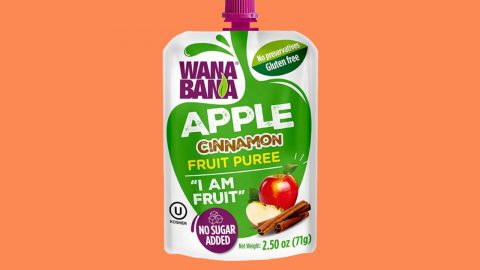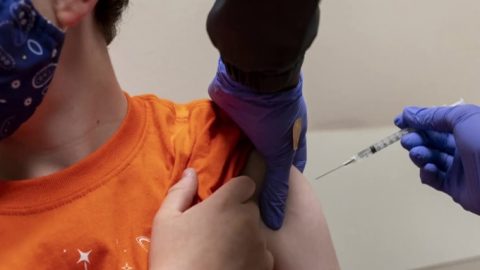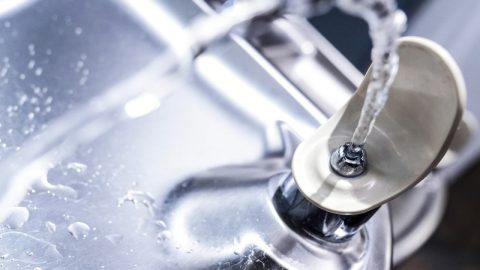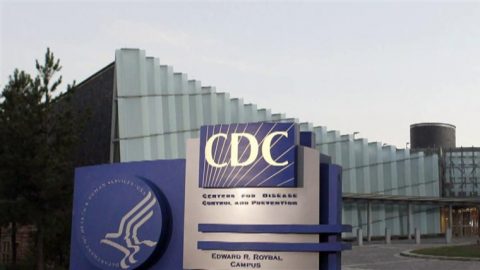Thirty years ago, kidney stones were considered a disease of the middle-aged white man. Now doctors are increasingly seeing a different kind of patient suffering from the extremely painful condition, especially during summer.
Kidney stones, hard deposits of minerals and salts that can get caught in the urinary tract, are now occurring in younger people, particularly among teenage girls, emerging data shows.
Experts aren’t sure why more children and teens are developing the condition, but they speculate that a combination of factors are to blame, including diets high in ultraprocessed foods, increased use of antibiotics early in life and climate change causing more cases of dehydration.
Doctors who spoke to NBC News said they see more kids with kidney stones in the summer than any other season.
Kidney stones is a metabolic disorder, also known as nephrolithiasis, that occurs when minerals such as calcium, oxalate and phosphorus accumulate in urine and form hard yellowish crystals as small as a grain of sand or as large as a golf ball in severe cases. Some stones make their way out the urinary tract with no issue, but others can get stuck, blocking the flow of urine and causing severe pain and bleeding.
In recent years, hospitals across the country have opened pediatric “stone clinics” to keep up with demand, where children can meet with urologists, nephrologists and nutritionists to get the care they need to treat and prevent future kidney stones.
Kidney stones in adults are linked to conditions such as metabolic syndrome, obesity, hypertension and diabetes.
“In children, we’re not seeing that,” said Dr. Gregory Tasian, a pediatric urologist at Children’s Hospital of Philadelphia. “They’re otherwise healthy and simply come in with their first kidney stone for unclear reasons.”
Much of the nephrolithiasis research in children in the U.S. has been led by Tasian and his colleagues and is focused on finding the cause. “Clearly something has changed in our environment that is causing this rapid shift,” he said.
About 10% of people in the U.S. will have a kidney stone at some point in their lives, according to the National Kidney Foundation. Stones can be found in children as young as 5 years old.

Chloe Carroll, now 14, was only 8 years old when she found blood in her urine during a dance recital. Doctors diagnosed her first kidney stone — a surprise for a young athlete with no underlying medical conditions.
Less than a year later, she was struck with a second stone. At age 11, she developed another — all three stones required surgical removal.
“It’s still nerve-wracking to have to go through it again and again,” Carroll, now 14, said through tears as she recalled the fear of undergoing surgery. “But I know it’s a part of life, and I have to keep moving forward.”
How many children develop kidney stones?
Kidney stones aren’t common in children, although the rate is unclear because most research has focused on adults.
One estimate comes from a 2016 study Tasian led that included nearly 153,000 adults and children in South Carolina who received emergency, inpatient or surgical care for nephrolithiasis.
The research, published in the Clinical Journal of the American Society of Nephrology, found that the annual incidence of kidney stone disease rose 16% from 1997 to 2012, with 15- to 19-year-olds experiencing the greatest increase. Within this age group, kidney stone incidence was 52% higher among girls and women. The disease became more common in men beginning at age 25.
Overall, the risk of kidney stone disease doubled during childhood for boys and girls, while women saw a 45% increase of risk in their lifetime over the 16-year study period. Black adults and children in the study also developed kidney stones at greater rates than whites.
Similar trends have been reported in other studies, including one conducted in Olmsted County, Minnesota, which found that the kidney stone incidence rate among children ages 12-17 increased 6% a year from 1984 to 2008.
Is diet linked to kidney stones?
Experts believe that kids’ worsening diets may play a role.
High amounts of sodium from potato chips, sandwich meats, sports drinks and packaged meals can force extra minerals into the urine that can clump into kidney stones. It’s especially likely if a child doesn’t drink enough water or drinks too many sweetened beverages high in fructose corn syrup.
It’s like trying to dissolve sugar into a nearly empty cup of coffee, said Dr. David Chu, a pediatric urologist at the Ann & Robert H. Lurie Children’s Hospital of Chicago who conducts research with Tasian.
Hotter summers cause more kidney stones
The more hot and humid it is, the more you sweat and less you urinate, allowing minerals to bond in the kidneys and urinary tract. Children are especially vulnerable to heat.
Dr. Christina Carpenter, interim chief of pediatric urology at the New York-Presbyterian Morgan Stanley Children’s Hospital, said she has already been treating more children with kidney stones in the summer.
Studies have found that the number of people seeking medical care for kidney stones increases as daily mean temperatures rise. Other research shows that the southeastern U.S. — known as the “kidney stone belt” — has as much as a 50% higher prevalence of kidney stone disease than the Northwest.
One 2008 study predicted the “belt” will inevitably expand upward, with the fraction of the U.S. population living in “high-risk zones” growing from 40% in 2000 to 70% by 2095.
An antibiotic link to kidney stones
Antibiotics may alter the gut microbiome in a way that favors kidney stone development, Tasian said.
In 2018, Tasian’s team found that people who took any of five commonly prescribed oral antibiotics were associated with a 1.3- to 2.3-fold increase in the odds of developing kidney stones. The risk decreased over time, but remained high for up to five years after taking the medication — and was greatest when given at earlier ages.
Because many antibiotics are prescribed unnecessarily in the U.S., Tasian called it a “leading theory” for the increase in children developing kidney stones.
The earlier a person develops kidney stones, the more time they have to develop a more severe form of the disease and long-term health issues associated with it, Tasian said. Some of the consequences include loss of kidney function, decreased bone mineral density that could lead to fractures, and higher risk of heart disease in adulthood.
Children who develop a stone have about a 50% chance of developing another one within five to seven years, according to the National Kidney Foundation.
Each stone that passes through the urinary tract increases their risk of developing a ureteral stricture, which is the narrowing of the tube that drains urine from the kidneys into the bladder, Carpenter said.
When this happens, kids may need to undergo invasive surgery to fix it.
The trend is also worrisome because there’s limited evidence about how to best treat children with kidney stone disease, experts say.
Symptoms of kidney stones
According to the National Institute of Diabetes and Digestive and Kidney Disease symptoms include:
- Sharp pains around the back, lower abdomen and groin.
- Pink, brown or red blood in the urine.
- A constant need to urinate.
- Cloudy or foul-smelling urine.
- Irritability, especially in younger children.
Some children may not experience any symptoms. However, symptoms can sometimes be “more nonspecific” in kids, particularly younger ones, said Carpenter, so they might complain about stomach aches, rather than back pain or nausea, for example.
To avoid kidney stones
Drink plenty of water, especially during warmer months, experts say.
Not sure you’re drinking enough? Make sure your urine resembles a light lemonade color, Carpenter said. If it’s darker, hydrate more.









Recent Comments